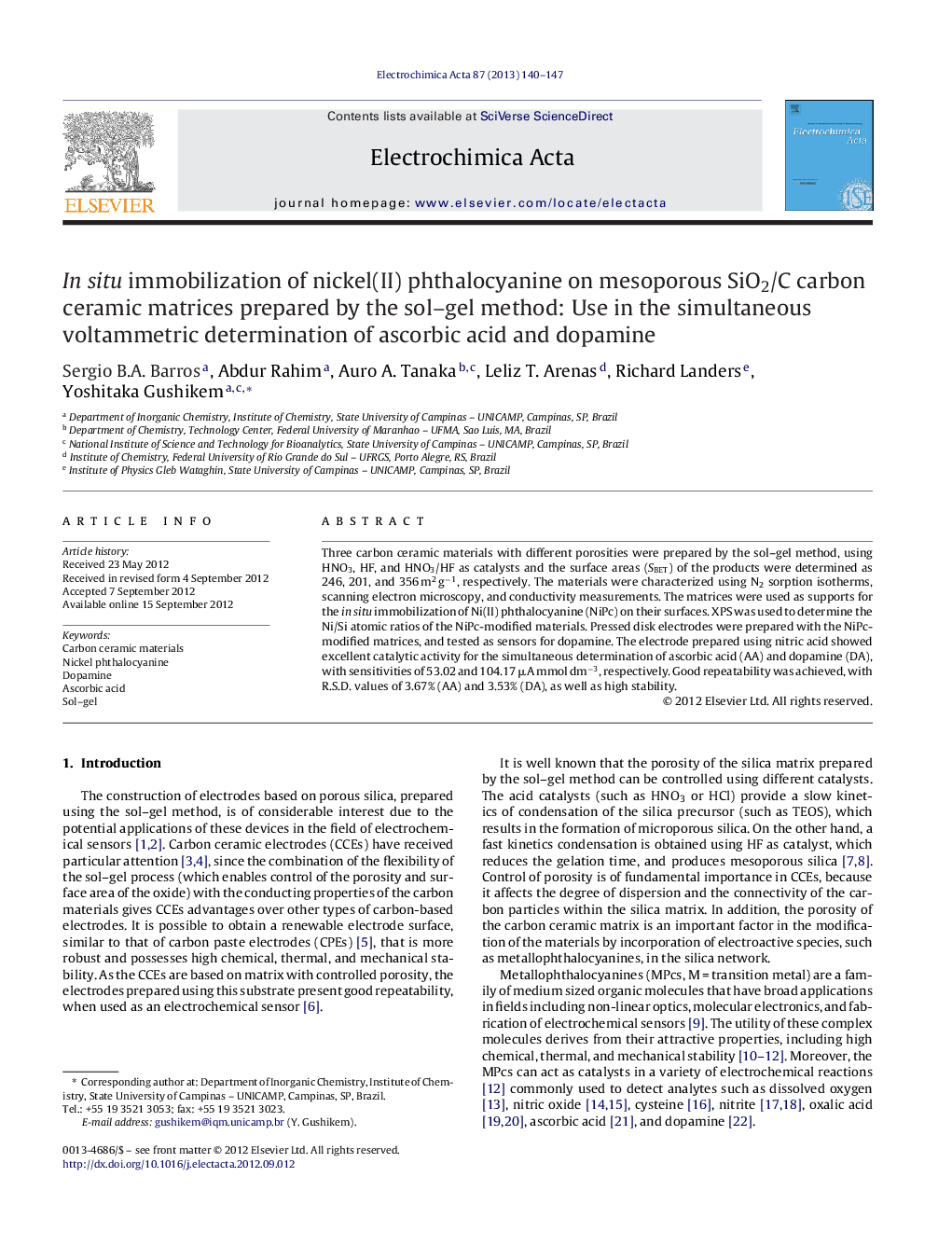| کد مقاله | کد نشریه | سال انتشار | مقاله انگلیسی | نسخه تمام متن |
|---|---|---|---|---|
| 187971 | 459651 | 2013 | 8 صفحه PDF | دانلود رایگان |

Three carbon ceramic materials with different porosities were prepared by the sol–gel method, using HNO3, HF, and HNO3/HF as catalysts and the surface areas (SBET) of the products were determined as 246, 201, and 356 m2 g−1, respectively. The materials were characterized using N2 sorption isotherms, scanning electron microscopy, and conductivity measurements. The matrices were used as supports for the in situ immobilization of Ni(II) phthalocyanine (NiPc) on their surfaces. XPS was used to determine the Ni/Si atomic ratios of the NiPc-modified materials. Pressed disk electrodes were prepared with the NiPc-modified matrices, and tested as sensors for dopamine. The electrode prepared using nitric acid showed excellent catalytic activity for the simultaneous determination of ascorbic acid (AA) and dopamine (DA), with sensitivities of 53.02 and 104.17 μA mmol dm−3, respectively. Good repeatability was achieved, with R.S.D. values of 3.67% (AA) and 3.53% (DA), as well as high stability.
In situ generation of nickel phthalocyanine (NiPc) inside the pores of SiO2/C.Figure optionsDownload as PowerPoint slideHighlights
► Nickel phthalocyanine, NiPc, synthesized in situ inside the pores of carbon ceramic matrices, highly and homogeneously dispersed.
► (NiPc) electrocatalyst for oxidation of dopamine and ascorbic acid.
► Very stable electrode for simultaneous determination of dopamine and ascorbic acid.
► Highly selective sensor.
► Highly stable, reproducible electrode.
Journal: Electrochimica Acta - Volume 87, 1 January 2013, Pages 140–147